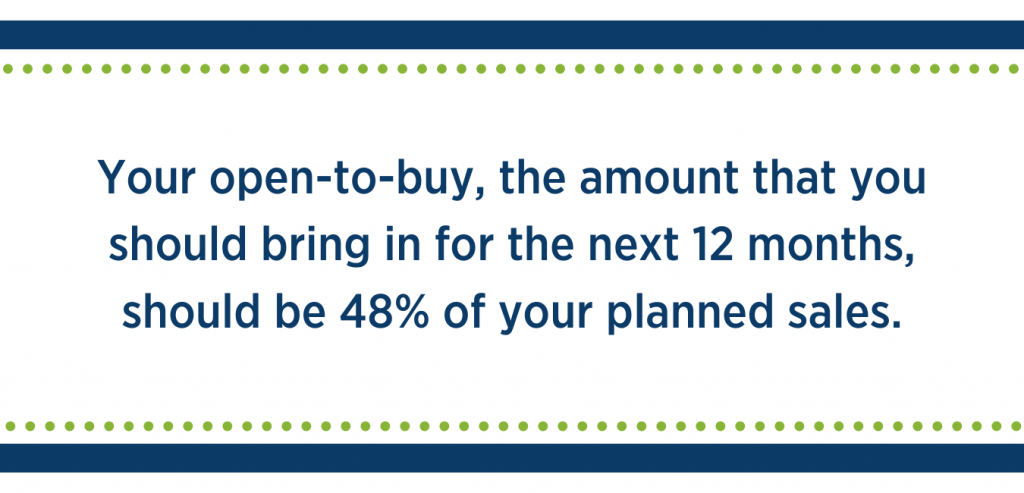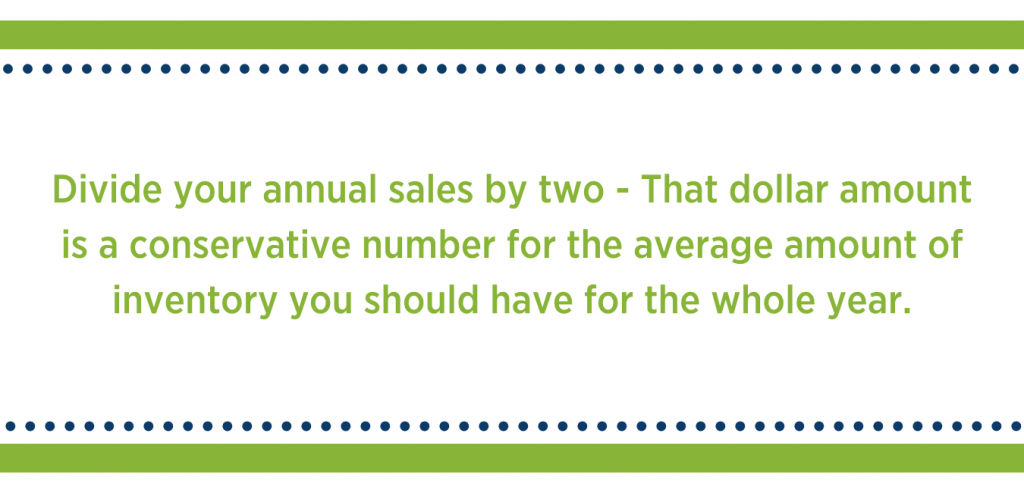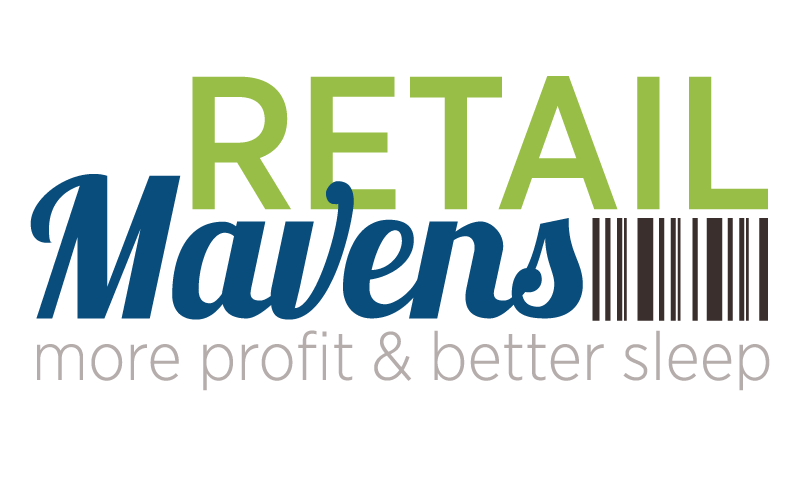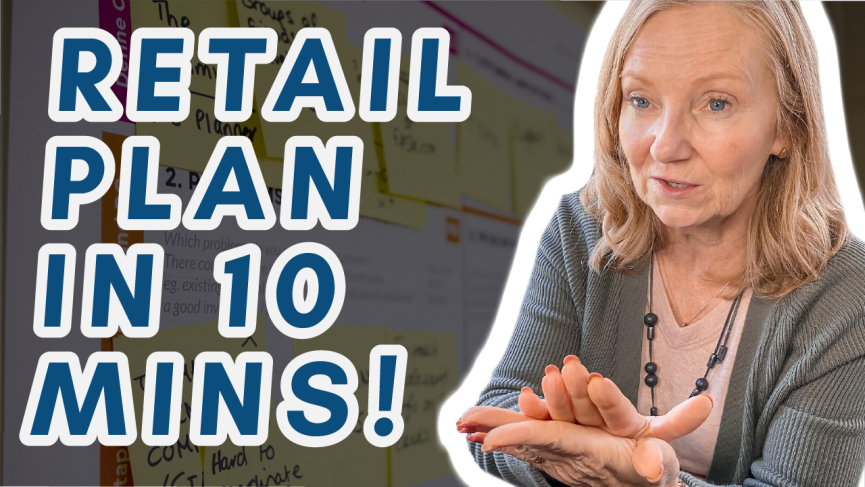Use this merchandise planning process to create a retail plan in 10 minutes! Yes, it’s true that inventory planning can be a pretty complex process, which is why we provide this service to our private clients using Management One’s formula and algorithms to predict a store’s merchandise plan with 93% accuracy.
Inventory management is the second step of our Sales Breakthrough System because it has a huge impact on your sales and profitability. Sign up for this free training to learn the four steps to grow your sales consistently and sustainably!
But in its simplest form, an inventory plan is just a map that tells you how much inventory you should buy and when, to meet your sales goals.
You can create a basic Open to Buy plan in just 10 minutes, and you’ll be head and shoulders above most people – including your competitors – because most people don’t do this at all. I’m even sharing a template below that makes this process even faster!
Inventory is your biggest asset. And it’s your single largest expense. You spend more money on this than any other expense in your business.
So knowing how much of it to have on hand, when to have it and how much to reorder is absolutely key in maximizing your profits.
Using Merchandise Planning to Look Back so You Can Look Forward
Your past data informs us so we can be prepared for the future. So the first piece of information we need is your past sales.
Look at each month for the past 12 months. How did you do? What’s possible for the next 12 months? Be realistic and then write it down and declare your goals.
Bank Balance Decision Making
Most retailers have no idea how much products they’re going to buy in a year. They go to trade shows and wing it – usually letting their current bank balance influence their decisions.
I call this bank balance decision making, and of course it’s not the right way to do it.
Using your planned sales from the previous steps, use this formula::

If your sales are 500,000, you’ll spend $240,000 on inventory for the whole year.
Now, for sure there are some exceptions. This formula is based on an initial markup of about 52% to 55%. If your initial markup is lower, then you’ll need more inventory to reach your sales goals. Learn more about initial markup (IMU) here!
You can also break it down by seasons and plan by a six or three-month period and use that same formula.
Timing Your Inventory
Once you have your budget, you’ll want to plan to bring in most of the inventory at the beginning of the season – it should arrive a month before the sales occur, while also making sure that you’re still receiving some other inventory during the other months.
That way there’s always something new and fun and exciting for your team as well as for your customers.
Your Average Inventory
When planning your inventory you also have to take into account your beginning inventory, so make sure you keep that in mind and adjust your open to buy plan accordingly.
Also, your open to buy plan won’t be accurate if you are currently over or under inventoried.
How do you know if this is the case? By comparing your current inventory on hand, to your average inventory.
Here’s a simple formula to determine how much inventory you should have on average for a whole year:

If you’re doing $500,000 in sales, you should have an average inventory of $250,000 over a 12 month time period.
In most cases it shouldn’t be higher than this – Our clients typically carry much less on the floor as there are other factors to consider. If you have questions please reach out!
This is going to ebb or flow depending on the peaks and valleys of your sales. Right before a big month, your inventory will be higher than average, and when your sales dip your inventory will be lower than average.
Keeping this in mind, if you find yourself with too much inventory, you should bring in less than the planned 48% new inventory I mentioned above. You’ll have to focus on selling out your older inventory until you’re more balanced.
If this is you – You are not alone! Below I’ll share my top tips for reducing inventory, along with an inventory plan template you can use.

Expect to Change Your Plan
Merchandise planning is very dynamic. Your open to buy plan is not a set it and forget it thing. You’ll need to continually tweak it based on what’s happening in your store. Keep reviewing your sales and reassess and adjust your plan every month so you don’t bring in too much or not enough.
I’ve created a great Merchandise Plan Template for this process. You can access it here (you’ll be prompted to make a copy in order to create an editable version to save or print). I’ve also included my top tips for reducing inventory if you are finding yourself overstocked.
The Next Steps
Once you have your basic plan working for you, and you’re ready to take it to the next level, it’s time to get more detailed.
Every single customer that comes into your store is voting with every single dollar they spend. They’re telling you if they want you to carry more of this or less of that.
So the impact of looking at your inventory plan at a deeper level, by departments or by class of inventory, is incredible. This is the service we provide for all of our private clients.
I first started out with the basic plan I just laid out. Then I decided I really wanted to dial it in, and I resourced up and hired a coach. And it had such an incredible, immediate impact on my sales and on my bank balance. They both went up.
If you want more information about what’s possible for you with this deeper merchandise planning service – please reach out. Send an email to clientcare@retailmavens.com. We’d be honored to help you.


